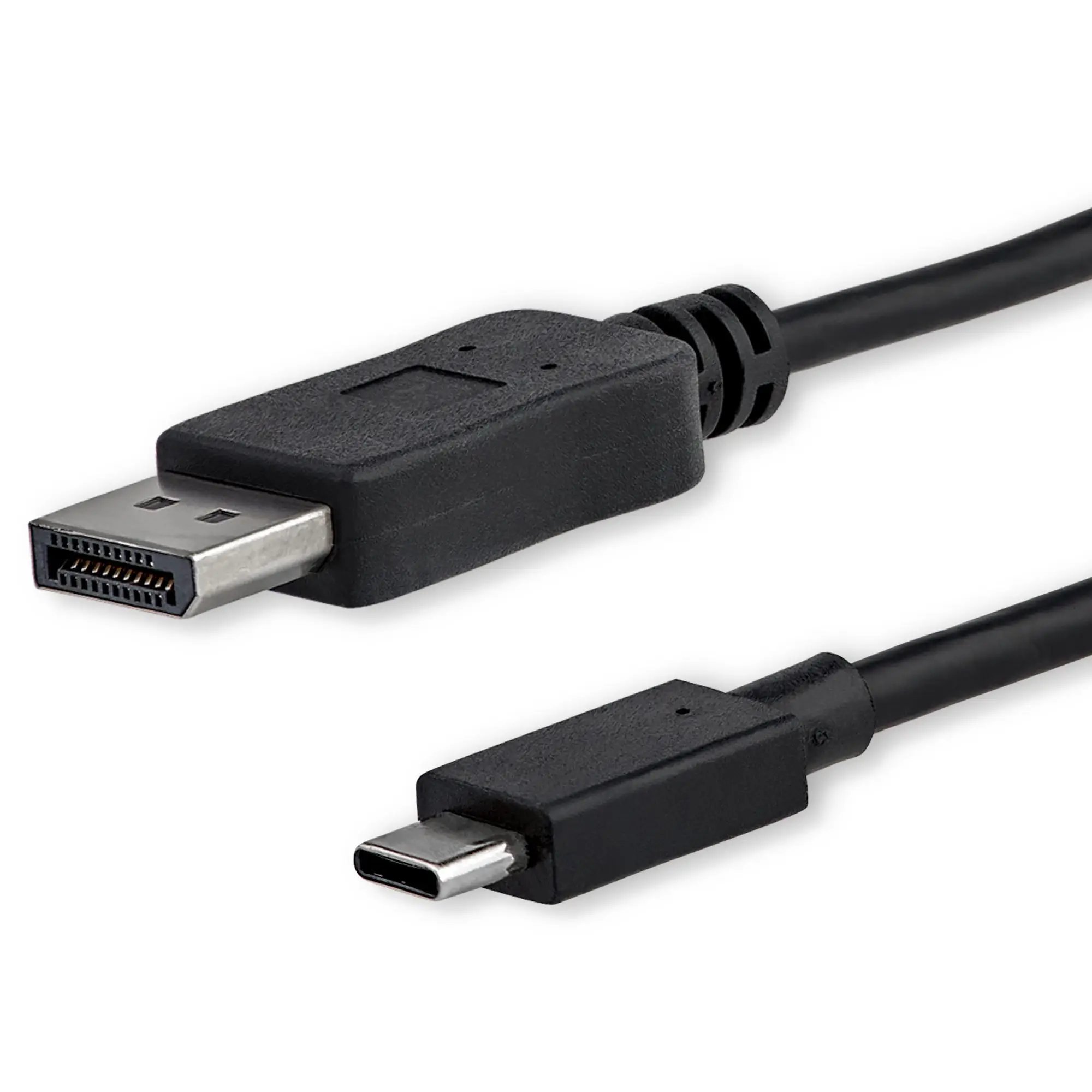How does a USB-C to DisplayPort cable work?


USB-C to DisplayPort cables are becoming increasingly popular as more devices adopt the USB-C standard. These cables allow users to connect their USB-C enabled devices, such as laptops or smartphones, to external displays that support DisplayPort. But how exactly do USB-C to DisplayPort cables work? In this article, we will explore the inner workings of these cables, their compatibility, and the benefits they offer.
Understanding USB-C and DisplayPort
Before diving into the specifics of USB-C to DisplayPort cables, it is important to have a basic understanding of USB-C and DisplayPort technologies.
USB-C, also known as USB Type-C, is a versatile and reversible connector that supports various protocols, including USB, Thunderbolt, and DisplayPort. It has become the standard for many modern devices due to its compact size and ability to transmit both power and data.
DisplayPort, on the other hand, is a digital display interface that allows for high-resolution video and audio transmission. It is commonly found on computer monitors, laptops, and graphics cards. DisplayPort offers superior video quality and supports features like multi-stream transport and daisy-chaining.
How USB-C to DisplayPort Cables Work
USB-C to DisplayPort cables are designed to convert the USB-C signal from a device into a DisplayPort signal that can be understood by a display. These cables utilize active circuitry to perform this conversion.
When a USB-C to DisplayPort cable is connected between a USB-C device and a DisplayPort monitor, the USB-C port on the device sends out a DisplayPort Alternate Mode signal. This signal tells the device to switch from its default USB mode to DisplayPort mode.
The USB-C to DisplayPort cable then receives this DisplayPort signal and converts it into a format that can be understood by the DisplayPort monitor. The cable’s active circuitry performs the necessary protocol conversion and signal conditioning to ensure a seamless connection between the device and the display.
Compatibility and Limitations
USB-C to DisplayPort cables are generally compatible with devices that support DisplayPort over USB-C. However, it is important to note that not all USB-C devices have this capability. Some devices may only support USB data transfer or charging through their USB-C ports.
To ensure compatibility, it is recommended to check the specifications of both the USB-C device and the DisplayPort monitor. Look for indications of DisplayPort over USB-C support or USB-C Alternate Mode compatibility.
It is also worth mentioning that USB-C to DisplayPort cables have limitations in terms of resolution and refresh rate support. The maximum resolution and refresh rate that can be achieved depend on the capabilities of the USB-C device, the DisplayPort version, and the cable itself. It is advisable to consult the product documentation or manufacturer’s website for specific details on supported resolutions and refresh rates.
Benefits of USB-C to DisplayPort Cables
USB-C to DisplayPort cables offer several benefits for users who want to connect their USB-C devices to DisplayPort monitors:
1. High-quality video and audio: DisplayPort supports high-resolution video and audio transmission, ensuring a crisp and immersive viewing experience.
2. Versatility: USB-C to DisplayPort cables can be used with a wide range of devices, including laptops, desktops, smartphones, and tablets, as long as they support DisplayPort over USB-C.
3. Plug-and-play convenience: These cables are easy to use and require no additional software or drivers. Simply connect the cable between the USB-C device and the DisplayPort monitor, and the connection is established.
4. Single-cable solution: USB-C to DisplayPort cables can transmit both video and audio signals, eliminating the need for separate cables for each.
5. Reversible connector: USB-C connectors are reversible, meaning they can be plugged in either way, making it more convenient and user-friendly.
In Conclusion
USB-C to DisplayPort cables enable users to connect their USB-C devices to DisplayPort monitors, allowing for high-quality video and audio transmission. These cables utilize active circuitry to convert the USB-C signal into a DisplayPort signal that can be understood by the display. It is important to ensure compatibility between the USB-C device and the DisplayPort monitor, as well as to consider the limitations of resolution and refresh rate support. USB-C to DisplayPort cables offer versatility, convenience, and a single-cable solution for users looking to connect their USB-C devices to DisplayPort monitors.
Recent Posts
How do I create an engaging and informative online quiz or assessment?
Creating an engaging and informative online quiz or assessment can be a powerful tool for… Read More
What are the most effective methods for managing and reducing work-related stress in the hospitality industry?
Work-related stress is a common issue in the hospitality industry, where employees often face long… Read More
How can I improve my assertiveness and communication skills in a leadership position?
In a leadership position, assertiveness and effective communication skills are crucial for success. Being able… Read More
What are the key elements of a successful employee recognition and rewards program?
Employee recognition and rewards programs play a crucial role in motivating and engaging employees, as… Read More
How do I effectively manage and respond to customer feedback and reviews?
Customer feedback and online reviews play a crucial role in shaping a company's reputation and… Read More
What are the best strategies for effective time management as a stay-at-home parent?
Effective time management is crucial for stay-at-home parents who juggle multiple responsibilities on a daily… Read More